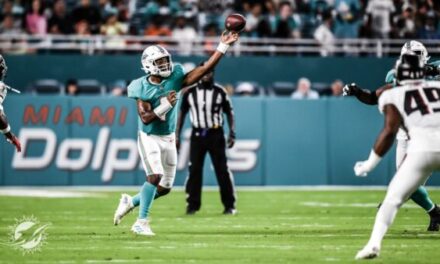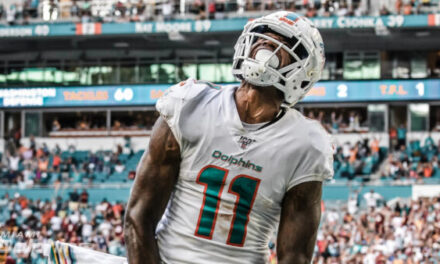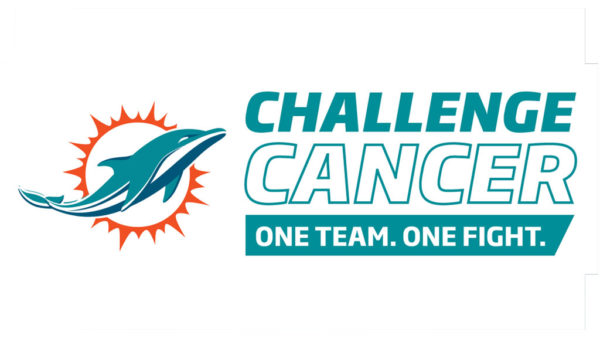
“We plan to alternate Mercury more often with Csonka and Kiick, giving Merc more action and the other two more rest.” This quote from Miami head coach Don Shula was reported by Bill Braucher in a headline atop the front page of the Miami Herald’s sports section prior to the opening of the Dolphins training camp.
That was Shula’s latest answer to the ongoing question of what to do about running back Mercury Morris. The former third-round draft choice had made his mark as a kickoff returner but had seen little action in the Miami backfield. Morris had only totaled 140 carries in his first three seasons as a pro and caught 23 passes. His frustration boiled over after the Dolphins’ 24-3 loss to the Dallas Cowboys in Super Bowl VI when he told reporters, “Except for the Star-Spangled Banner and kickoffs, I never got off the bench.”
Morris’ public outburst surely did not please Shula, but the coach showed an understanding of where Morris was coming from, “I’ll never hold it against a football player who’s unhappy about not playing. If he didn’t feel that way, I wouldn’t want him around.”
Shula wanted Mercury Morris around, but he also had incumbent running backs Larry Csonka and Jim Kiick and only two spots in the backfield to fill. The coach had made it clear that he was not considering using all three backs at the same time. Rather, his intent was to rotate them and keep all three relatively fresh.
That would be a major shift for the Dolphins. Csonka and Kiick, also known as “Butch Cassidy and the Sundance Kid,” were entrenched as the two-headed running back monster Miami had ridden to the Super Bowl. The nickname had come from the mind of the Herald’s Braucher in 1969, when the movie starring Paul Newman (Butch) and Robert Redford (the Kid) came out. While not blessed with movie star looks, although both Csonka and Kiick later dabbled in acting, theirs was a true-life buddy story. They first connected at the 1968 College All-Star game, became roommates in their first Dolphins camp, and stayed inseparable during their time in Miami.
Butch (Kiick) and the Kid (Csonka) were the old-school, hard-nosed runners-the type of players that would hold a special place in Don Shula’s heart. Their connection and toughness were chronicled in a cover story in the August 7, 1972, issue of Sports Illustrated. In that story, Shula refers to them as “throwbacks,” one of the better compliments he could give.
[pickup_prop id=”27285″]
The story included examples of their toughness, some of which would be considered at best ill-advised today. Describing one of the nine times (at that point) Csonka’s nose had been broken, writer John Underwood told how, in 1971, Csonka came back to the huddle with his freshly rebroken nose bleeding. The blood was dripping on tight end Marv Flemming’s shoes, and Flemming’s face grew pale. Csonka said, “So I leaned the other way to bleed on Kiick. He loves it. It makes him think he’s been in a game.”
Csonka had also received a penalty for unnecessary roughness for destroying a Buffalo defender’s jaw with a forearm shiver, a story Shula would later enjoy retelling. Kiick was reported to have played with a broken toe, a broken finger, a hip pointer, and a badly bruised elbow—all at the same time. Trainer Bob Lundy told Underwood “He no longer worries about whether they have a high or low threshold of pain because he doubts they feel pain at all.”
Mercury Morris, however, clearly did feel pain. He had dealt with injuries over the course of his first three years with the Dolphins, leading Shula to wonder if he was up to the rigors of carrying the ball more frequently.
Morris was receiving an opportunity to prove himself to Shula during the 1972 preseason and helped lead Miami to their first win, a 35-17 romp in Cincinnati. The Herald’s Braucher focused on one play during that game to illustrate the difference between Morris and Kiick.
Braucher wrote about this first-quarter play, “On third and five at his 25, Bob Griese flipped a quick pass over the middle. The play was designed to ensure at least five yards and a first down. Morris took the pass near the 30…but proceeded to circle backwards and away from two defenders…seeking running room.”
“Merc found the room all right, and then some in a 50-yard burst to the Bengals 25. Kiick, with more drive and bulk but without Mercury’s speed, would have bulled the two tacklers in a forward thrust and insured the first down.”
It was Morris’ speed, and elusiveness that Shula felt would be an additional ingredient that could put the Dolphins over the top and not allow them to get stuffed like the Cowboys had done to them in Super Bowl VI.
Morris had to first earn Shula’s trust, however. Braucher noted the bonehead play Morris had made in 1969, his rookie season, when he caught a punt, ran backwards into his own end zone trying to find room to cut up-field, and got tackled for a safety. George Wilson, Shula’s predecessor as Miami head coach, called it a “high school play” and blamed Morris for the Dolphins’ loss.
Braucher, an influential voice in Miami, was effusive with praise for Morris after the Cincinnati game. He wrote, “The Morris on display this year is not the Morris who blew an occasional play or a block or fumbled or dropped passes in the past…Here is an athlete who, after three years of potential and detours, is running himself into the class of Gale Sayers and O. J. Simpson (that was quite a compliment in 1972).”
Morris had led the first-string offense’s domination of the Bengals with 53 yards on seven carries and 71 yards on two receptions. Quarterback Bob Griese saw his first action of the preseason and proceeded to slice up the Cincinnati defense. He led the Dolphins to an early 21-3 lead with touchdowns on their first three possessions and finished the game with eight completions in twelve pass attempts for 161 yards and three touchdowns. Griese was particularly happy with his performance since he was playing in front of about 50 family members from Indiana.
After the game, Shula addressed the “dilemma” he was facing at running back. “It’s really a problem to pick between Mercury and Jim Kiick…However, I’m enjoying the problem.”
Shula also enjoyed the win, saying, “It sure feels good to get one under our belt,” but there were still problems to deal with on the injury front. Teams did not bring nearly as many players into camp back then as they do now. Miami went into the Cincinnati game with only 57 men on the roster, so players out with injuries were a much bigger issue than they would be today.
The Dolphins’ defensive line, in particular, was thinning out. Defensive end Bob Heinz was expected to be out at least two months with a fractured vertebra in his back. Also, end Jim Riley was out with a twisted knee that had “popped out” during a recent practice. End Bill Stanfill had played against the Bengals but was still dealing with a sprained shoulder.
Seeking an able body to fill in, Shula and defensive coordinator Bill Arnsparger turned to linebacker Bob Matheson. Arnsparger had asked Shula to acquire Matheson from Cleveland just before the 1971 season. Shula agreed, concerned at the time about a wrist injury that linebacker Nick Buoniconti had suffered and sent a second-round draft pick back to Cleveland. Matheson had played defensive end briefly at Cleveland, but at 235 pounds, was considered light for the position even back then.
Matheson was impressive in his first action on the defensive line against Cincinnati, acclimating to the different position very quickly and utilizing his speed to record a sack and play an overall solid game. This move was considered temporary until Riley came back. Arnsparger, however, would have a different idea.
Speaking of injuries, Csonka had jammed one of his middle fingers on a Bengals defender’s helmet. He was asked after the game if the injury was some form of poetic justice. You see, on that Sports Illustrated cover story, if the cover photo was examined closely enough, one would find Csonka’s right hand resting on his crossed leg…with his middle finger extended. The devilish smiles both he and Kiick were sporting in the photo make it seem quite unlikely that this was an accident.
Csonka’s response was limited to simply, “Hmmm.”
Coming Next Week: Part 5-Jockeying for Positions. The Dolphins even their preseason record. Questions remain about the backup quarterback position while Jim Kiick makes his case in the running back competition.
[pickup_prop id=”20350″]
[pickup_prop id=”21954″]
[pickup_prop id=”27287″]
[pickup_prop id=”21794″]
[pickup_prop id=”21810″]













